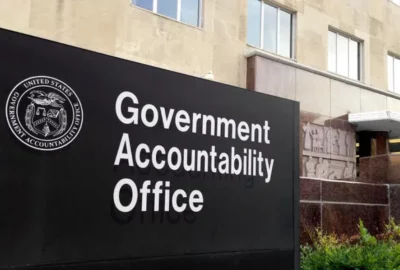Considering its mission, the National Security Agency and ‘transparency’ aren’t often mentioned in the same breath, but its inspector general is looking to shine a light on the agency’s business where he can.
That journey starts with answering some of the easy questions. Like, for starters, how many people work in the NSA Office of the Inspector General?
“I’d been told at one point that the size of our office wasn’t a public number,” Robert Stoch, the NSA IG, said last Friday at a Project on Government Oversight event in Washington.
But when someone at a meeting suggested filing a Freedom of Information Act request to get the answer, Storch, less than a year into the watchdog job, realized there might be an easy fix.
“I said, ‘Well look, you don’t have to file a FOIA. Let me go back and check if I can release it. I want to be transparent,'” he said. “So I went back and I checked and it wasn’t a classified number and so I said, ‘Look, I want to release it. It’s not going to hurt anything.'”
The OIG, it turns out, has 97 employees on its staff, according to Storch.
In July, the NSA OIG released for the first time a public version of its semiannual report to Congress through Oversight.gov.
“Because so much of the stuff can’t be disclosed, I think it really is critically important that we be transparent where we can be, so that the public knows at least that there is effective, independent oversight going on, even if we can’t disclose everything that we’re looking at,” Storch said.
Prior to the release of a public report, the OIG didn’t have its own independent website, but just last month, it stood up OIG.NSA.gov.
After posting a public version of its semi-annual report to Congress, Stoch said his office is looking at more of its reports and reviews to determine what it can make public — and more importantly, not just uploading black-bar laden documents.
“I don’t have any interest in putting out Swiss cheese,” Storch said. “I know it drives people nuts to read all the redactions and everything else, but we were able, with the semi-annual report … to put forward a product that I think, or at least I hope, was readable and gave people a good feel for the scope of our work — if not every detail, a lot of it.”
NSA IG stands up whistleblower ombudsman position
Storch said he’s also looking to build a culture at the agency where whistleblowers feel comfortable coming forward with tips that might lead to audits and investigations.
“The reality is that IG offices just aren’t big enough to know everything that’s going on across all of the agencies,” Storch said. “So we depend, as IGs, on the people in the front lines — the people who actually know, because they work there every day, what’s going on in their offices. When they see something they think is wrong, we really do want them to come forward.”
As part of that culture change, Storch stood up a new whistleblower coordinator position at NSA, patterned after his old job as the Justice Department’s ombudsman. A link to the ombudsman’s email is available on the agency’s public-facing and internal websites.
“If people want to ask questions, they can go to that person. That’s not an intake person, that’s not the one who’s going to do the actual investigation,” Storch said. “That’s somebody whose job it is to make sure that people know their rights and know what protections are available.”
Between October 2017 and March 2018, the OIG opened three new investigations into whistleblower retaliation claims, and also closed three cases where it determined no retaliation took place.
However, in July 2017, according to the latest semi-annual report, the watchdog office substantiated claims that two NSA employees and an Air Force official retaliated against a subordinate who made a disclosure to the OIG and his superiors “concerning mission-related matters.”
NSA suspended both of those employees without pay for 10 days, and the OIG referred the Air Force official to the Secretary of the Air Force for disciplinary action.
Storch said that he personally reviews every report of an investigation involving a reprisal allegation.
“I want to satisfy myself that we’re doing everything we can do to make sure that person’s rights and protections are honored,” he said.
NSA IG stands up whistleblower ombudsman position
During his tenure as the NSA’s top watchdog, Storch said his office has had “very clear access” to agency information and records.
That’s a sign of progress from 2016, when Congress passed the IG Empowerment Act, clarifying text from the original 1978 IG Act that inspectors general have access to all agency documents.
What the NSA OIG doesn’t have, however, is the ability to compel people to speak with OIG investigators if they work in the private sector, even if they previously worked as NSA employees or contractors.
That would change under the IG Supoena Authority Act. The bill, introduced by Rep. Steve Russell (R-Okla.), passed the House in September but has stalled in the Senate.
“There are a couple of IGs that have it,” Storch said regarding subpoena power. “I don’t think they use it a ton, I’m not aware of any big problems from it. My own personal view is that it would be good to expand that.”
Copyright
© 2024 Federal News Network. All rights reserved. This website is not intended for users located within the European Economic Area.





